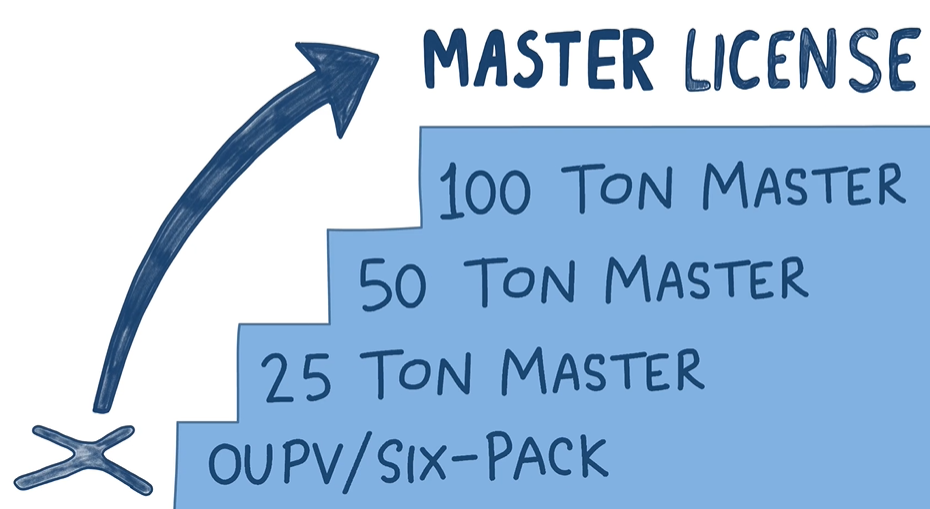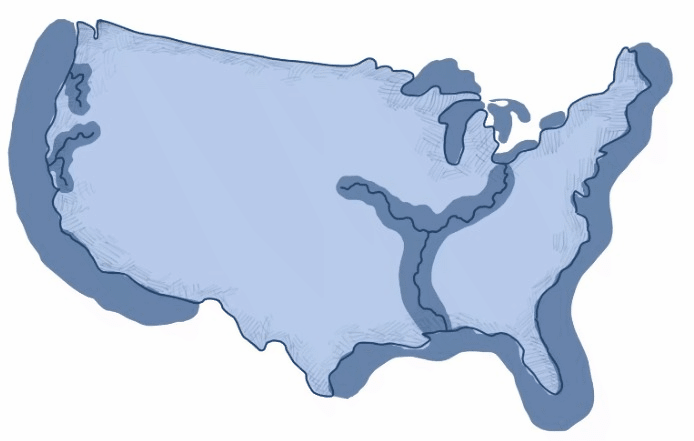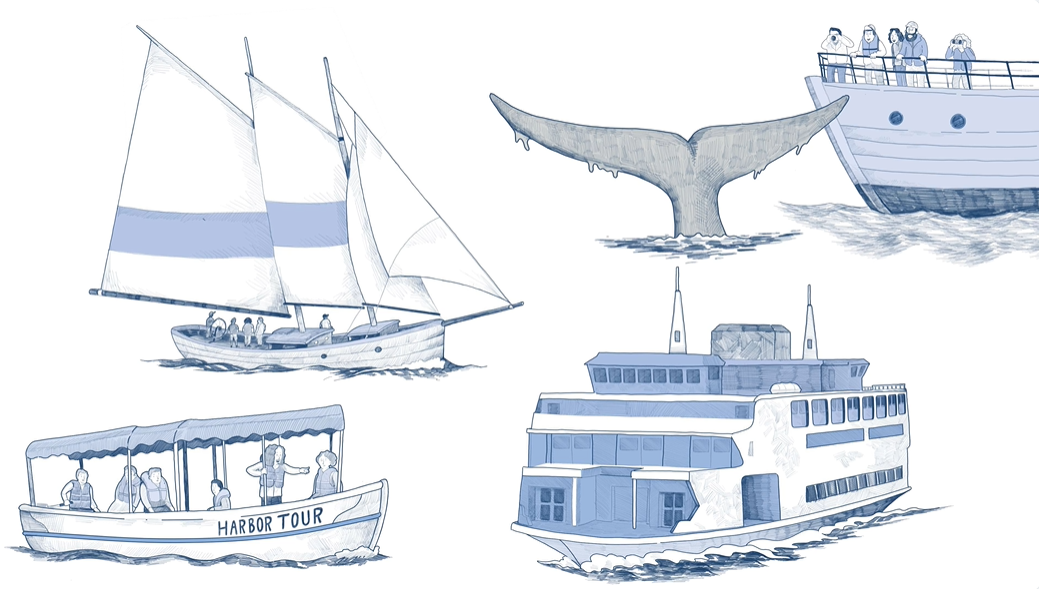Free Shipping on Orders $50+
Free Shipping on Orders $50+
Overview of the 25/50/100 Ton Master's License
by Bob Figular May 02, 2024
Determining Factors for Masters License Issuance: Sea Service and Vessel Size
What is a general overview of the 25/50/100 Ton Master's?
The USCG Master's license is the highest-level license that you can acquire. This license allows you to operate inspected vessels with 7 or more paying passengers; think more commercial vessels, such as water taxis, whale-watching tour boats, and ferries. It also gives you the capabilities of the OUPV license, which allows you to take up to 6 paying passengers out on uninspected vessels, both power and sail. 
💡 TIP! The USCG does not require that you get a Six-Pack license before you get your Masters level license, so if you qualify, you can skip the Six-Pack and go straight to your Master!
Where can the Master's captain's license be issued for operation?
 There are two designation components for the Master's license, where you can use your license professionally and the size inspected vessel you can operate up to. The Master's can be issued for operation on the Great Lakes, inland waterways, and Near Coastal (up to 200 miles offshore).
There are two designation components for the Master's license, where you can use your license professionally and the size inspected vessel you can operate up to. The Master's can be issued for operation on the Great Lakes, inland waterways, and Near Coastal (up to 200 miles offshore).
 Additionally, the license comes in three versions: 25, 50, or 100 tons. You will be able to operate uninspected vessels up to 100 GRT, but the size of inspected vessels you can operate will depend on which Master captain's license you are issued.
Additionally, the license comes in three versions: 25, 50, or 100 tons. You will be able to operate uninspected vessels up to 100 GRT, but the size of inspected vessels you can operate will depend on which Master captain's license you are issued.
Both the amount of sea service time and the size of the vessels you have been on will influence the license you are eligible for.
📖 Here is our quick guide on how to obtain a Master's license.
How does the Coast Guard determine where and tonnage of the captain’s license I get?
The Coast Guard will look at your submitted sea service form, where you documented your boating, and base the license on your experience. Both the amount of sea service time and the size of the vessels you have been on will influence the license you are eligible for.
Which tonnage Master's license do I qualify for?
As for the size of the Master's license you will receive, that will be dependent on your experience. Here are some general guidelines based on the minimums you may have based on your overall boating time:
- 360 days on vessels less than 17 gross tons of your overall experience = 25 Ton Master's
- 360 days on a 17 gross ton vessel of your overall experience = 50 Ton Master's
- 360 days on a 34 gross ton vessel of your overall experience = 100 Ton Master's
Not to worry, most Master's applicants start off with the 25-Ton. The Coast Guard will review your entire sea service form to determine the tonnage.
What are examples of inspected vessels?
Inspected vessels meet specific safety and operational standards set by the U.S. Coast Guard and require a Master's license to operate. 
Examples include:
- Ferry boats
- Harbor tour boats
- Sailing schooners
- Dive boats
- Whale-watching boats
The U.S. Coast Guard inspects and issues a Certificate of Inspection (COI) to most commercial vessels that carry passengers or cargo. This certification ensures the vessel meets all necessary requirements for its intended use.
How big is a 25/50/100 Ton vessel?
The tonnage of a vessel is influenced by factors such as its construction, the materials used, and its intended commercial purpose. While these are general guidelines, they can help provide a sense of vessel size:
- A 25-ton vessel typically ranges from 40 to 65 feet in length
- A 50-ton vessel is usually between 50 and 70 feet long
- A 100-ton vessel is generally 65 feet or more
Keep in mind that tonnage is not solely based on length but also on the vessel's overall volume and capacity.
How do I upgrade from a 50-Ton to a 100-Ton Masters license?
To upgrade from a 50 to 100 Ton Masters Inland license, you need to be able to document either of the following sea service requirements: 90 days (25%) of service on vessels of 51 GRT or above OR 180 days (50%) of service on vessels of 34 GRT or above.
To upgrade from a 50 to 100 Ton Master's Near Coastal license, you need to be able to document either of the following sea service requirements: 180 days (25%) of service on vessels of 51 GRT or above OR 360 days (50%) of service on vessels of 34 GRT or above.
There is no written examination requirement when increasing the tonnage of your license, provided it remains within the same scope of operation under the Master's level license.
However, if you are changing the scope of operation - for example, from Inland to Near Coastal - there are additional written requirements or examinations needed to qualify.
How to upgrade from an Inland Masters to a Near Coastal Masters license?
There IS a written requirement if you plan to go from an Inland Master's to a Near Coastal Master's, plus satisfying the boating experience requirement.
If your current license is an OUPV Inland, you must increase to an OUPV Near Coastal before increasing the Master's Inland to Near Coastal. An OUPV Inland license can be upgraded to an OUPV Near Coastal license with 90 days of experience in seawards of the boundary line. In addition, there is an extra test you will need to take. We do not offer this, but if you call the Coast Guard at (888) 427 - 5662, they will be able to help you.
You can complete these two steps simultaneously OR just take care of the OUPV first, then the Master's later.
Once your OUPV is Near Coastal, you need to take the Master's Upgrade course and exam again. In addition, you must provide additional sea time to the Coast Guard.
Can I get a 25-ton Master if I don’t have time on that size vessel?
You need time on at least a 5 HP engine and no greater than 200 GRT. You can get a 25-ton Master even if you do not have time on a 25-ton vessel.
What endorsements can I attach to my Master's captain's license?
You can attach the Assistance Towing Endorsement and/or the Auxiliary Sailing Endorsement to a Master license.
Is the Master's captain's license internationally recognized?
The Master's captain's license is internationally recognized. This means you can use this license when operating in international waters. However, you must start and end your trip within United States waters with the same paying passengers. This is an extremely important note to remember.
💡 TIP! Reach out to the other countries you plan on operating in to see if they have additional licenses you must get.
Leave a Comment
Comments will be approved before showing up.
